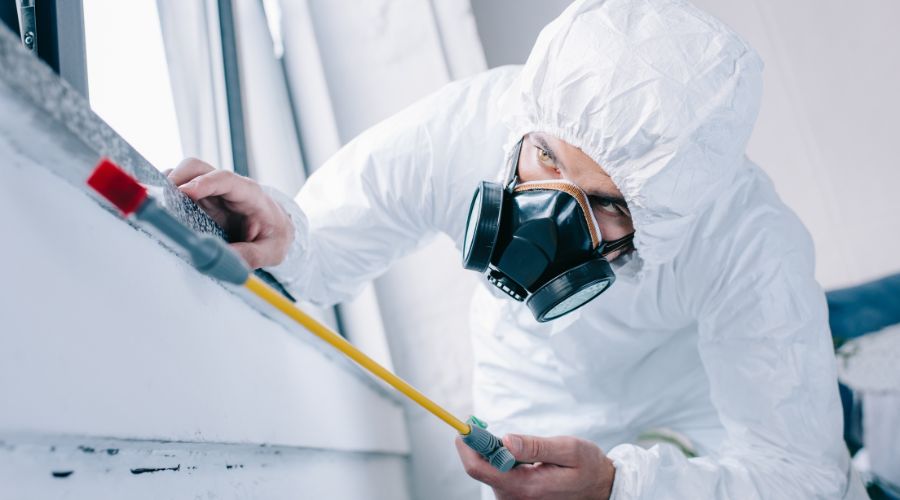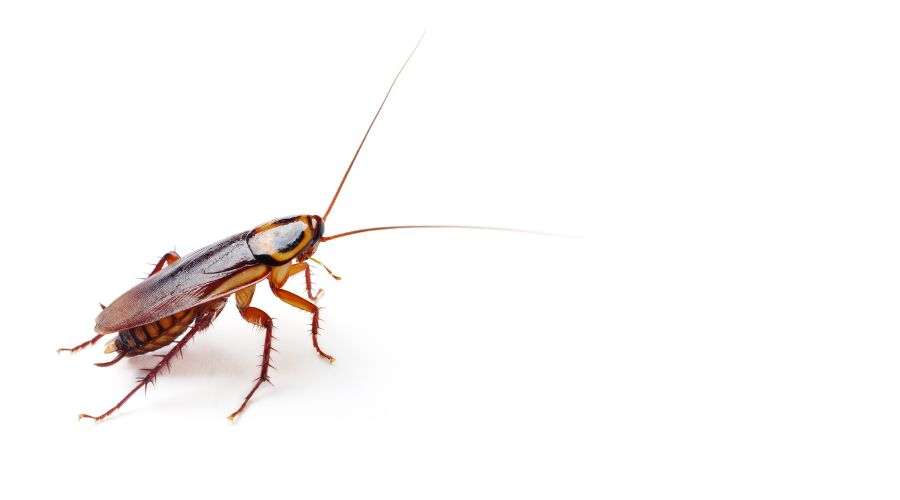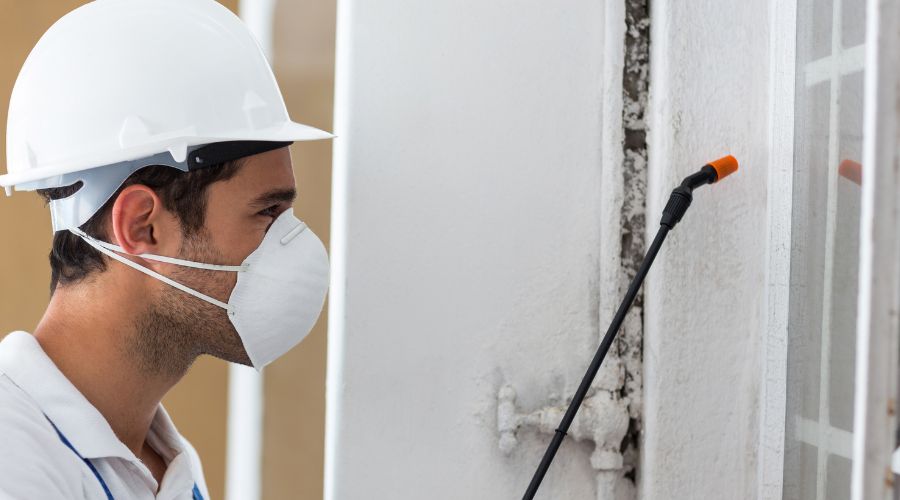Pest Control Sydney Guide
#1 Guide to Effective Pest Management in Sydney
Dealing with pests in your home or business can be annoying, unsanitary, and even dangerous. That’s why it’s important to partner with a reputable pest management company. The company can inspect your property and accurately identify any pests there. They use effective, environmentally-friendly methods to get rid of them.
In this guide, we’ll walk you through everything you need to know about pest control in Sydney. We’ll cover common pests, treatment options, and costs.
What is Pest Control?
It refers to managing or eliminating unwanted pests that infest buildings and other human-made structures. Pests like cockroaches, ants, termites, and rodents can contaminate food and spread disease. They can also cause serious structural damage if left uncontrolled.
Professional exterminators such as Green Pest Control Sydney use a variety of methods to inspect properties. They identify pest problems and implement cost-effective solutions. Your house or place of business is kept sanitary through effective treatments. These methods also help protect your investment, prevent health risks, and provide peace of mind.
Why is Pest Control Important?
Regular inspection and control is so important for several key reasons:
- Prevent the spread of disease – Pests like mice, rats, and cockroaches can spread dangerous diseases such as salmonella, hantavirus, and the plague. Protect your healthy by keeping them under control.
- Avoid structural damage – Termites, carpenter ants, and other wood-destroying pests can eat and destroy the wooden structural elements in a home. Prevent costly damage when you deal with these pest promptly and properly.
- Protect your investment – An unchecked infestation can quickly get out of hand, requiring expensive repairs or even lowering your property value. Keep this problem in check to protect your biggest investment.
- Provide peace of mind – No one wants to worry about pests skittering through their house or office. Effective prevention and control gives you confidence in the cleanliness and safety of your space.
Pest Inspections
The first step in any pest management plan is a thorough inspection of the property in order to identify any pest problems.
Residential Pest Inspections
House inspections involve carefully checking both the exterior and interior areas for signs of current or potential pest infestations. The inspector will look in crawlspaces, attics, garages, and even behind walls for evidence of pesky bugs, rodents, cockroaches, and other pests.
Any problem areas will be noted and a report provided listing the location and type of any pests found. Recommendations for customized treatment options will also be included.
Commercial Pest Inspections
Commercial checks are focused on warehouses, restaurants, offices, hotels, and other business properties. It examines both customer-facing areas and behind-the-scenes spaces for pest activity.
Dining facilities require special attention to detail, as cockroach and rodent infestations can lead to serious health code violations. Inspections help identify sanitation issues that allow pests to thrive.
Why are Pest Inspections Important?
These allow technicians to accurately identify any infestations early, before they have a chance to multiply and spread. Finding exactly where pests are entering from is key to implementing a targeted pest management plan.
Inspections also eliminate guesswork by pinpointing which pests are on your property. Different pests call for different control methods, so proper identification is crucial.
Regular checks provide peace of mind that any lurking pest problems will be detected right away. Early intervention prevents minor issues from ballooning into major headaches down the road.
Residential Pest Control
A pest inspector must first identify any problem areas. Then, they will implement a residential control plan tailored to your specific needs.
Technicians will then focus on eliminating current pest populations. These will involve gaining access to infested areas, sealing up entry points, and using strategic baiting or spraying. Two of the common solutions that they use are environmentally-friendly gel baits and insect growth regulators are common solutions.
Follow-up treatments are scheduled as needed until the initial infestation is under control. To keep your house pest-free for the long run with ongoing preventative maintenance.
Common residential pests effectively controlled include:
- Cockroaches – German cockroaches in particular infest kitchens and bathrooms.
- Ants – Black house ants, Argentine ants, and white-footed ants invade in search of food.
- Spiders – The Sydney funnel web spider and red back spider are native to the region.
- Rodents – Rats and mice enter homes and buildings through very small holes.
- Bed bugs – International travel has led to a resurgence of these parasitic pests in hotels.
- Termites – Sydney homes are often built on ideal termite habitat.
- Fleas – Common in backyards and areas where pets frequent.
- Silverfish – These pests infest old books and papers.
- Stored food pests – Pantry moths, weevils, and grain beetles attack stored dry goods.
With the right plan, your home will become an inhospitable environment for these unwelcome pests.
Commercial Pest Control Management
Commercial properties require specialized treatments. The methods used must account for factors such as a constant stream of visitors, deliveries, and inventory.
An appropriate management plan focuses on sanitation. It also prevents pest access to food, water, and shelter within the building. It’s also crucial to seal holes and cracks to prevent infiltration.
Businesses like restaurants and food processing facilities must have intensive cleaning. They must also have strict protocols for keeping pests out of sensitive areas. This is extremely important.
Ongoing maintenance may involve techniques like:
- Installing rodent traps or electronic pest deterrent devices
- Applying targeted insecticide sprays
- Baiting for cockroaches and ants
- Releasing beneficial insects like ladybugs that prey on plant pests
- Treating drains and grease traps to control flies and gnats
- Power washing dirty exterior areas
- Improving landscaping and drainage to eliminate standing water
Businesses can pass health inspections with vigilant commercial pest control. They can also protect their reputation and keep pest worries at bay.
Common Pest Control Services
Below we drill down into details on controlling some of the most troublesome pest species and how they’re controlled:
Here is the tabulated response for the Common Pest Control Services section:
| Pest | What is it? | How is it controlled? |
|---|---|---|
| Cockroaches | Persistent pests that survive on crumbs and breed rapidly. Can spread disease. | Use of gel baits, insecticide sprays, and sanitation of food sources. |
| Ants | Invade in trails; nest outdoors and indoors. Can contaminate food. | Borax powder/gel along trails, drenching of outdoor nests, sealing entry points. |
| Spiders | Webs are unsightly and some species can bite. | Removal of webs/egg sacs and non-toxic sprays in undisturbed areas. Sealing access holes. |
| Fleas & Ticks | Bite humans and pets; transmit diseases. | Treatment of indoor and outdoor areas where they reside. Insect growth regulators and property spraying. |
| Birds | Flocks leave droppings on structures. | Bird spikes, nets, slope modifications, nest removal, birdproofing, odor repellents. |
Termite Control
Termites are highly destructive pests that feed on the cellulose found in wood. Left unchecked, they can destroy wooden structural elements. This can lead to costly repairs.
There are different methods for controlling and preventing subterranean and drywood termites:
1. Termite Inspections
An inspection involves checking for signs of termite activity. Inspectors look closely at wood elements. These include support beams, floor joists, wooden exterior sidings, fence posts, and decking.
Property owners are alerted to any evidence found. They are also advised on any conditions conducive to termite infestations. Recommendations are provided for repairing any damage and ongoing protection.
Early detection through regular inspections prevents major destruction.
2. Termite Barriers
Termites access wood structures from nests in the soil below. Termite barrier systems are installed around the exterior foundation to block this underground access.
There are two main types of termite barriers:
- Chemical barriers – These involve “trench and treat” application of liquids like Termidor or Phantom, which create a chemical barrier lethal to termites. They must be re-applied every 3-5 years.
- Physical barriers – Barriers like Termimesh and Termi Mesh physically block termites with an impenetrable steel mesh wall installed around your foundation. These last for decades without needing replacement.
Termite barriers keep nearby termite colonies from being able to reach and attack your home’s valuable structure.
3. Termite Treatments
If termites have already infiltrated your wood elements, treatment is needed to eliminate the current infestation. This may involve:
- Fumigation – Your property is sealed off and filled with gas to suffocate drywood termites already inside the structure. Requires temporary vacation of the premises.
- Liquid application – Termiticides are injected into infested wood or the surrounding soil. Used on drywood or subterranean termites.
- Bait system stations – Strategic bait stations lure termites to “feed” on a toxicant-laced wood, which they then share with the rest of the colony, destroying it from the inside out.
- Wood replacement – Heavily damaged wooden structural elements may need replacement to fully treat a severe termite infestation.
A combination of fumigation, liquid application, and baiting ensures elimination of the entire colony. Follow-up inspections confirm success. Ongoing barrier treatments provide lasting prevention.
How Much Does Pest Control Cost?
The cost depends on the size of your property, extent of the infestation, and your location. Here are some typical price ranges:
- Residential pest inspection – $75-$150
- Residential treatment for common pests – $250-$750+ per treatment
- Commercial inspection and treatment – $300+ per month
- Termite inspection – $150-$300
- Termite spot treatment – $500-$1,500
- Termite tent fumigation – $2,000-$5,000
Ongoing preventative service agreements provide the best value. Quarterly or monthly treatment rates start from $30-$65 per month.
When getting quotes, the cheapest option is rarely your best bet. Look for an experienced company. They should have a proven track record of effective, environmentally-friendly pest elimination methods. These methods should be tailored to your specific needs. Investing in high quality pest extermination solution will pay off!
DIY Pest Control in Sydney: Is it Effective?
For minor pest problems, DIY treatment options are available in Sydney hardware stores and supermarkets. However, DIY methods have some significant downsides compared to professional treatments.
| Factor | DIY Pest Control | Professional Pest Control |
|---|---|---|
| Effectiveness | Low. DIY products are limited and often only kill pests you can see. Removal of entire nests/colonies is unlikely. | High. Professionals have access to more potent products and can fully eliminate entire pest populations. |
| Convenience | Requires your own time and labor for application. Ongoing monitoring and re-application is your responsibility. | Technicians handle the inspection and treatment process from start to finish. |
| Cost | Cheap upfront, but re-treatment is often needed leading to more expense over time. | More expensive initially, but solves the problem long-term in 1-2 treatments typically. |
| Safety | High risk of exposure to yourself and family from chemicals. Proper safety gear unlikely. | Licensed pros are trained on safe practices and have protective equipment. Risk is low. |
| Guarantee | No guarantee of successfully getting rid of pests long-term. | Reputable companies offer guarantees, retreat if pests return. |
Overall, professional pest control is superior in effectiveness, convenience, long-term cost savings, safety, and providing guaranteed elimination of pest infestations.
About Sydney
Sydney, the vibrant capital of New South Wales, Australia, is renowned for its stunning landmarks, diverse culture, and thriving urban life. From the iconic Sydney Opera House to the majestic Sydney Harbour Bridge, the city offers a plethora of attractions. While Sydney is celebrated for its beauty and lively atmosphere, it also faces challenges, including pest control issues common to urban areas.
- Central Business District (CBD): The heart of Sydney, the CBD is a bustling hub of commerce and culture, where effective pest control is crucial for maintaining clean and pest-free office spaces.
- Eastern Suburbs: Home to iconic beaches like Bondi and Coogee, the Eastern Suburbs rely on pest control to address issues such as termite infestations in residential areas.
- Western Suburbs: Characterized by diverse communities and residential neighborhoods, effective pest control is essential in Western Suburbs to address common issues like rodents and cockroaches.
- Northern Beaches: A coastal haven, the Northern Beaches demand pest control services to mitigate problems associated with pests in residential and recreational spaces.
- Southern Suburbs: Predominantly residential, the Southern Suburbs require pest control measures to address issues like ants and spiders in homes and public spaces.
Sydney boasts remarkable landmarks and diverse neighborhoods. However, the city faces pest control challenges that necessitate comprehensive solutions to safeguard its iconic structures, natural spaces, and urban areas. Effective pest management is essential for maintaining the beauty and functionality of this dynamic metropolis.
FAQ
What types of pests do you treat?
We treat all common household pests including cockroaches, ants, spiders, fleas, silverfish, and rodents.
What are signs I may have termites?
Look for mud tubes, hollow wood, crumbling drywall, buckling floors, musty odor.
Are your pest control methods safe?
Yes, we use integrated pest management with low-toxic solutions approved for indoor use.
What can I do to prepare for the treatment?
Clear any clutter and make sure all areas are easily accessible. Remove pets and cover fish tanks before treatment.
How long will treatment take?
Most treatments take 1-2 hours depending on the size of the property.
Will I have to vacate my home during or after treatment?
No, all our products used for interior treatments are safe once dry.
How long will the effects last?
Depends on the treatment, but 3-6 months on average. We provide warranty periods.
How often is pest control needed?
We recommend every 3 months to prevent future infestations. Additional treatments may be needed for current problems.
How can I prevent pests from entering my home?
Seal cracks and gaps around doors and windows, keep food stored in sealed containers, and promptly clean up spills and crumbs.
Here is an FAQ on pest control licensing requirements in Victoria:
What are the licensing requirements for pest controllers in Victoria?
In Victoria, pest control technicians and operators must be licensed by the Victorian Environmental Protection Authority (EPA) to apply pesticides. Licenses are issued for 3 years and require completing approved training and exams.
Conclusion
Pests compromise health, damage property, and hurt businesses’ bottom lines. But defending your home or company against invaders has never been easier.
Today’s pest control companies offer high-tech and eco-friendly solutions. They target infestations at the source. They keep them at bay through preventative maintenance.
Next time ants march through your kitchen or rodents scamper across the attic, don’t despair! Pick up the phone and have pest experts handle the dirty work. This way, you can get back to normal life fast and keep problems from coming back.
We hope this guide has helped educate you on the options available to you. We also hope it has helped you understand what to expect from professional pest management services in the Sydney area.



